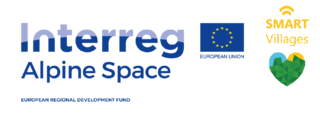demo text
21st century town meeting
Smart governance, Smart economy
21st century meetings are public forums that use modern communications technologies to enable a large number of participants at various locations to simultaneously discuss the same issue in small groups. This method can engage up to 5000 people in face-to-face dialogue. Through a combination of keypad polling, large screen projection, teleconferencing and other technologies, 21st Century Town Meetings enable participants to simultaneously participate in intimate discussions and contribute to the collective wisdom of a very large group. Usually this method is used in deliberations about complex public policy issues. Town Meetings are intended to be ordinary citizens with no particular expertise in the topic under discussions.
A 21st Century Town Meeting is a forum that links technology with small-group, face-to-face dialogue to engage many people at a time in deliberation about complex public policy issues. A 21st Century Town Meeting is more than a single event: it is an integrated process of citizen, stakeholder and decision-maker engagement that produces recommendations on public policy in time frames that align with governance cycles and the demands of the media.
The process can take place within one room or the groups can be dispersed around the city/country/world.
Large-scale public deliberations can impact the terms and outcome of a debate, the shape and content of proposed or enacted policy, or how budget is allocated. Whatever the subject matter, people will be more likely to engage in a deliberative process if they believe they are helping to make decisions that will have an impact in the real world in reasonable time frames. A 21st Century Town Meeting should therefore be used when there is a direct link to the key decision-makers who can ensure results. There are three categories of public work (whether local, regional or national in scope) that are particularly well-suited to the 21st Century Town Meeting methodology: planning and economic development, budgeting and resource allocation, and policy formulation. This type of meetings have been used to address number of important issues: rebuilding of WTC site in New York; rebuilding of New Orleans after the hurricane Katrina; assessing the healthcare in California, USA.
Some of the downsides of 21st century meeting is the high cost and reliance on the technology. On the other hand, the strengths are a large number of participants included in dialogue, instant gathering of information on what participants think about the issue addressed and capturing the imagination of the public more widely.
Before meeting
Planning the 21st century meeting is a very intensive process. Designing, planning and coordinating an event intended for large amount of people requires a lot of time, money, skilled facilitators that run individual tables and technological devices. When planning the event, be careful to address the following points:
- Select the topic you want to address with the workshop. The following questions can help you do this mindfully: Who are the key decision makers, stakeholders, and communities, and what is the nature of their stake in the issue? What are the decision-making processes already under- way? How would a deliberation build on previous activity? What information is required for the decision-making process? What is the history and current political climate concerning the issue?
- Select skilled facilitators that are familiar with the topic.
- From a team of staff/executive team to help you organize the event, process the information in real time and communicating with media and decision makers. Executive team includes: table facilitators, theme team members (filtering the suggestions at each table and distilling them into key themes), issue experts (that circulate through the room). A meeting of 200 people would require approximately 8-10 staff members and 40-45 volunteers. Volunteers are trained to work in any of three roles.
- Select the participants – be aware that the selected group is representative of the whole population.
- Take care of appropriate media coverage.
-Send information and learning material to the participants (by post or electronically), to make them familiar with the subject.
Meeting execution
It is important to bear in mind that in 21st century meeting, no group of people can deliberately take over the agenda as all voices are equal. Participants come together at a set time (at one or more locations). A single host oversees the whole event. - Participants are split up into groups of 10 – 12 people and each discuss the topic/questions prepared. The discussion at each table is moderated by facilitator. Each group follows the same agenda of discussion so that conversations run in parallel. Alongside the moderators, each table is assigned a scribe who records table discussions on a computer linked to a networked system.- Contents of the conversation at each table are collected in real time. This information is then sent to the central point (to the theme team) where a team of co-workers summarizes comments from all tables/groups into themes. Those themes are presented back to the rooms for comment or votes. Each participant also has his/her own keypad to vote individually on those themes or questions using individual electronic keypads which are distributed at the beginning of the process.- The results of the votes are presented in real time, on large screens. - Before the meeting ends, the organizers create a report with results and recommendations and distribute them to participants, decision makers and the media present at the event.
After meeting
After the meeting was held it is time to present the results of the discussion to the public and to take action: - Report the results of the event to the wider public. - Take plans and decisions based on the conclusions drawn from the discussion.
 Region, Country
Region, Country
 One time event, 120 - 180 minutes
One time event, 120 - 180 minutes
 500 - 5000
500 - 5000
 Moderator skills required, moderator knowledge required.
Moderator skills required, moderator knowledge required.
 Sector: Economy, policy formulation, (future) development
Sector: Economy, policy formulation, (future) development
